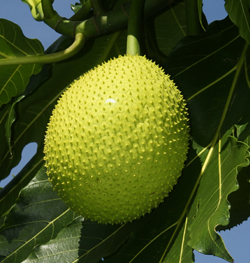You have no items in your shopping cart.
Problems Adding to Cart? Click here for assistance.

Acne is commonly associated with teenagers and young adults in their 20s, but can be a problem for skin at any age. Women in their 30s and older, including menopausal or post-menopausal-aged women can also suffer from acne as can men of every age, too. Acne breakouts consist of pus-filled pimples called whiteheads, and blackheads on the face, especially around the nose chin and forehead. Acne breakouts may also occur on the body; acne sufferers often get pimples on their back and shoulders and chest. Acne sufferers usually also have oily or combination skin.
Acne may be caused by a number of factors: heredity, irritation, incorrect- or over-cleansing, certain medications, stress and, probably most often, hormonal factors. Andogens are the hormone responsible for oil production. Sometimes andogens lead to an overproduction of sebum, that waxy oil the skin generates which keeps it lubricated.
Like oily skin, acne can be difficult to prevent, depending on what causes it. Eating a diet high in omega-3 fatty acids found in foods like walnuts, flax, salmon and sardines and staying hydrated by drinking plenty of water may help keep skin’s oil production levels more in check. While it’s essential to keep acne-prone skin clean, it’s equally important not to overdo cleansing and acne treatments, which can aggravate skin, lead to increased sebum production and result in more acne breakouts. skin with acne overusing them (which can irritate skin) is also a good idea.
Retinoids or retinols – vitamin A derivatives that hasten cell-turnover and reduce sebum, vitamin B5, vitamin B, and α-hydroxy acid (AHA) family-member glycolic acid can be beneficial to oily skin, as can azelaic acid, a wheat-derived anti-bacterial and keratolytic agent (meaning it normalizes skin growth). Beta Hydroxy Acids (BHAs) like salicylic acid are similarly keratolytic and provide sometimes-effective exfoliation acne sufferers. Plant derivatives like clary, kukui nut oil, willow bark extract and antioxidants like those in white, red and green teas, as well as witch hazel, may also ameliorate symptoms. Benzoyl peroxide is also a typical ingredient found in over-the-counter acne medicines, though adult acne sufferers should typically use a lower dose (2.5%) than may be effective for teenaged skin (5-10%).
Following a smart acne-skin routine is essential: Cleanse morning and evening with a gentle cleanser, use an alcohol-free toner once or twice daily to balance skin and clear out pores, a morning antioxidant serum and a retinoid at night. Layer a non-comedogenic moisturizer over the serum and be sure to use sunscreens daily, especially if using a drying retinoid or retinol product. And don’t forget to exfoliate once or twice weekly with a peel, scrub and/or mask. Exfoliation aids in cell turnover, key to keeping pores unclogged. Using an ultrasonic LED device on the red light setting can also be an effective solution for acne.
Nordihydroguaiaretic Acid for Adult Acne
Envy Skin Skin Clarifying Acne Treatment Pads
Arcona AM Blemish Lotion
Truth Renew Ultrasonic & LED Anti-Aging System
suki transformative cleansing clay
Astara Blue Flame Purification Mask
Michael Todd True Organics Antioxidants Carrot Multivitamin Serum
Blissoma Smooth A+ Perfecting Serum
Nutra-Lift Blemish Defense Trio Pack
Arcona Raspberry Clarifying Pads
Ultra Clear Facial Cleansing System



